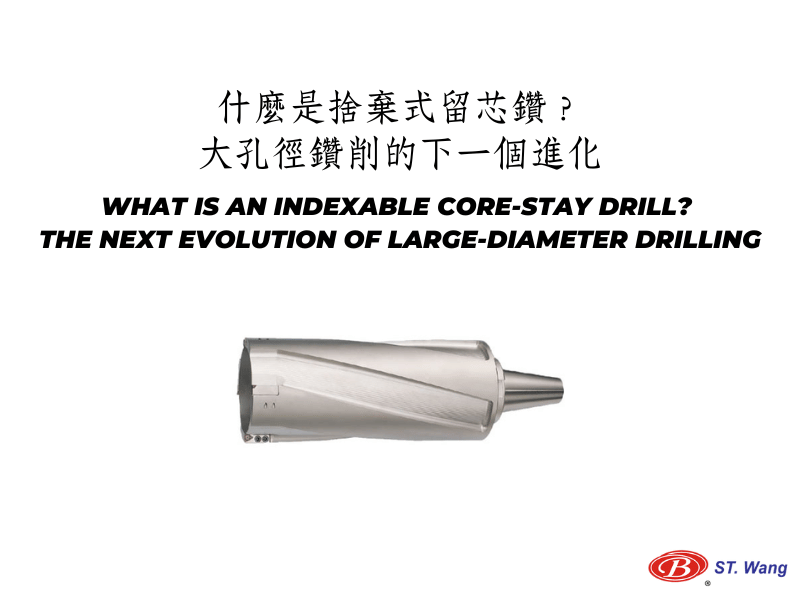Machining has always been about precision and speed. In the highly competitive industry of manufacturing efficiency is now a requirement. Whether you’re manufacturing automotive components, aerospace components, or high-tech electronic components, the tools that you choose directly affect your profitability. The indexable drill, high-speed drill, the tungsten carbide inserts and threading tool are all making the difference.
These aren’t just updates for older tools. These tools are a better way to work, as they decrease downtime and expense and produce superior outcomes. We’ll take a closer at how they can aid manufacturers to drill more quickly, cut better and finish more quickly.

Image credit: stwang-tw.com
Indexable Drills: More Holes, Less Hassle
Drilling large holes could be expensive and time-consuming. Drills made of solid material were slow to wear out, demanded sharpening, and frequently slowed down production lines. That’s why more machinists are shifting to an indexable drill. You can swap out inserts, not the entire tool if it wears out.
What makes indexable drills stand out is their performance. These drills are made to provide heavy-duty performance and long runs. They also require very little maintenance. With interchangeable inserts that can reduce waste, lower inventory of tools and keep machines running longer. SHANG TZANG WANG ENTERPRISE, CO., LTD offers disposable core-stays that provide constant performance for large-diameter machines. This upgrade reduces downtime when shops perform repeated hole drilling.
High Speed Drills: Designed to Meet the Modern Needs
High-speed drills are employed in production settings where time is crucial. They are made to work fast and accurately without sacrificing speed. They’re ideal for materials with high resistance and short cycle times. From precision medical components to high-volume automotive parts they are in use everywhere.
Modern high-speed drills feature advanced coatings and optimized flute designs that decrease friction and heat buildup and increase the lifespan of the tool. This means fewer breaks as well as fewer replacement tools and more components. For anyone who’s experienced the frustration of a broken drill in the middle of a cycle, switching to a high speed drill could be an amazing experience.
Tungsten Carbide End Mills: Reliable Performance Cut After Cut
When it comes to milling, tungsten carbide end mills are the workhorses of the shop floor. End mills’ toughness and resistance to heat are a preferred option for cutting through tough materials. They provide consistently good results, whether finishing small edges or roughing out large areas.
The flexibility of tungsten carbide mills are the reason why they are unique. With a variety of flute counts, Helix angles, and coatings, they are able to be customized to suit a diverse range of jobs including titanium and aluminum. Carbide end mills are an most suitable choice for machinists who are looking for both durability and precision. They can provide a balanced approach between extreme material removal and a polished surface.
Threading Inserts: Tiny Tools, Big Impact
The process of creating threads might appear to be a minor part of a procedure, but this is one of the most vital aspects. A poor thread can destroy an otherwise perfect part. It’s crucial to use threading inserts of the highest quality. These replaceable, small tools are designed to cut threads from the inside or outside of the nut using precision and reproducibility.
Unlike traditional taps and dies that wear differently, threading inserts offer steady results across many cycles. The tool is indexed to the next cutting spot when one edge has become dull. It’s not necessary to remove it or regrind. It’s fast, affordable, and tidy. Machine operators not only appreciate threading inserts due to their speed but also for their reliability. With the right insert you can be sure that the threads will be inserted correctly the first time no second passes, no rework, and you don’t have to worry about the possibility of part rejection.
The Bottom Line
In modern machining, time is a precious resource that which you cannot afford to lose. Therefore, today’s most efficient manufacturing facilities are shifting to smarter, more adaptable tooling solutions. These cutting tools are not only more precise, they also streamline workflows and reduce changes, in addition to extending the life of the tool. What’s the result? A decrease in time spent attempting to solve problems and focusing more on the production of high-quality components. In an industry that has higher requirements and a tighter margin are commonplace having tools that perform better gives companies the edge they need to stay ahead of the curve.